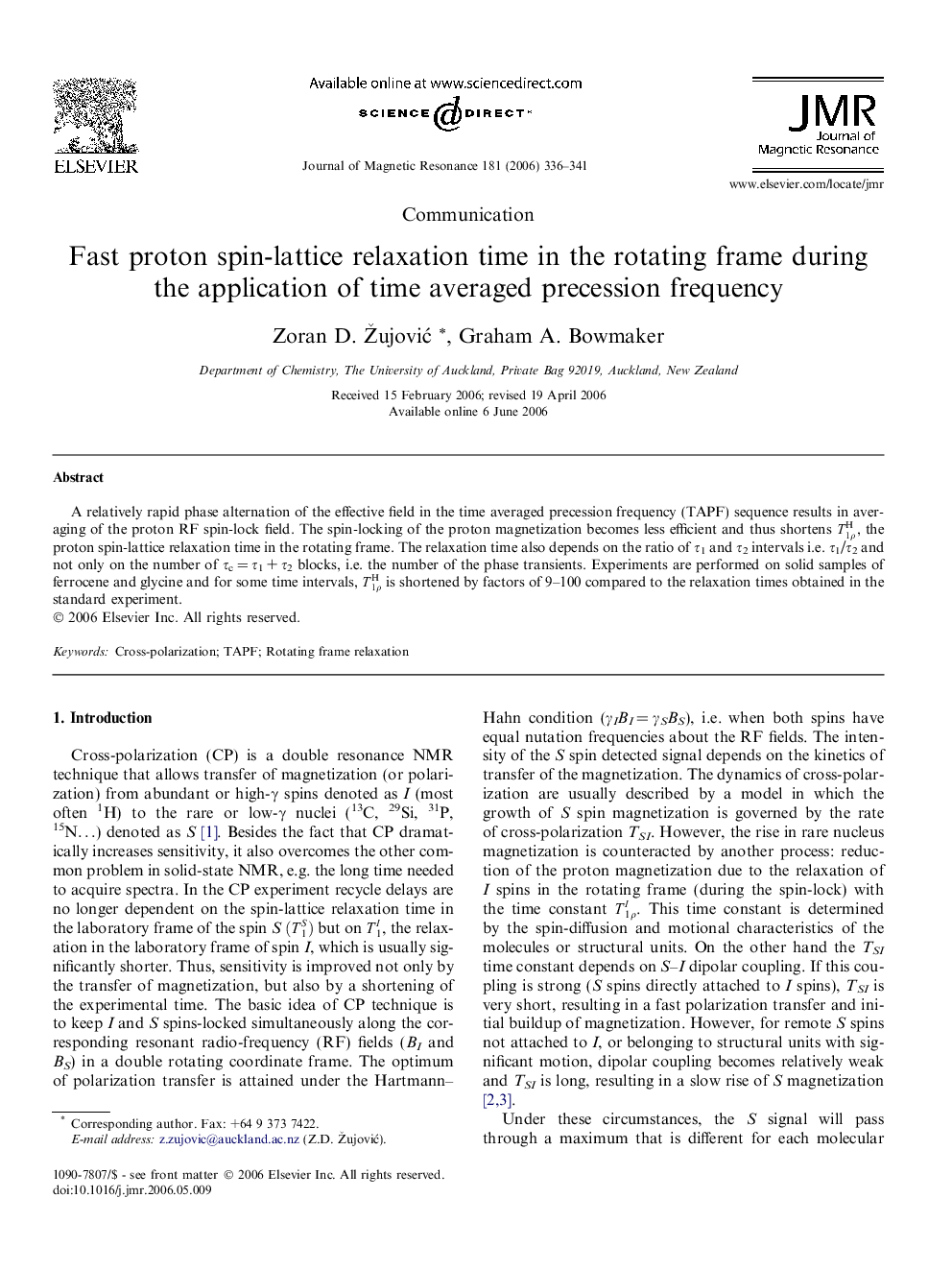| Article ID | Journal | Published Year | Pages | File Type |
|---|---|---|---|---|
| 5407763 | Journal of Magnetic Resonance | 2006 | 6 Pages |
Abstract
A relatively rapid phase alternation of the effective field in the time averaged precession frequency (TAPF) sequence results in averaging of the proton RF spin-lock field. The spin-locking of the proton magnetization becomes less efficient and thus shortens T1ÏH, the proton spin-lattice relaxation time in the rotating frame. The relaxation time also depends on the ratio of Ï1 and Ï2 intervals i.e. Ï1/Ï2 and not only on the number of Ïc = Ï1 + Ï2 blocks, i.e. the number of the phase transients. Experiments are performed on solid samples of ferrocene and glycine and for some time intervals, T1ÏH is shortened by factors of 9-100 compared to the relaxation times obtained in the standard experiment.
Related Topics
Physical Sciences and Engineering
Chemistry
Physical and Theoretical Chemistry
Authors
Zoran D. ŽujoviÄ, Graham A. Bowmaker,
